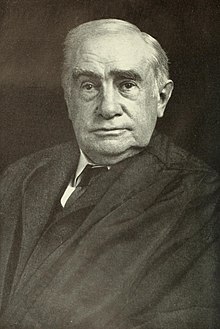
Back هنري بيلينجز براون Arabic هنرى بيلينجز براون ARZ Henry Billings Brown German הנרי בראון HE Henry Billings Brown ID
Henry Billings Brown | |
|---|---|
 Brown's portrait by Frances Benjamin Johnston, 1905 | |
| Associate Justice of the Supreme Court of the United States | |
| In office January 5, 1891 – May 28, 1906[1] | |
| Nominated by | Benjamin Harrison |
| Preceded by | Samuel Freeman Miller |
| Succeeded by | William Henry Moody |
| Judge of the United States District Court for the Eastern District of Michigan | |
| In office March 19, 1875 – December 29, 1890 | |
| Nominated by | Ulysses S. Grant |
| Preceded by | John W. Longyear |
| Succeeded by | Henry Harrison Swan |
| Personal details | |
| Born | March 2, 1836 Lee, Massachusetts, U.S. |
| Died | September 4, 1913 (aged 77) Bronxville, New York, U.S. |
| Political party | Republican |
| Spouses | Caroline Pitts
(m. 1864; died 1901)Josephine Tyler (m. 1904) |
| Education | Yale University (BA) Harvard University |
| Signature | |
Henry Billings Brown (March 2, 1836 – September 4, 1913) was an American jurist who served as an associate justice of the Supreme Court of the United States from 1891 to 1906.
Although a respected lawyer and U.S. District Judge before ascending to the high court, Brown is harshly criticized for writing the majority opinion in Plessy v. Ferguson, an opinion widely regarded as one of the most ill-considered decisions ever issued by the Court, which upheld the legality of racial segregation in public transportation. Plessy legitimized existing state laws establishing racial segregation, and provided an impetus for later segregation statutes. Legislative achievements won during the Reconstruction Era were erased through Plessy's "separate but equal" doctrine.[2]
- ^ "Justices 1789 to Present". Washington, D.C.: Supreme Court of the United States. Retrieved February 14, 2022.
- ^ Sutherland Jr., Arthur E. (July 1954). "Segregation and the Supreme Court". The Atlantic Monthly.